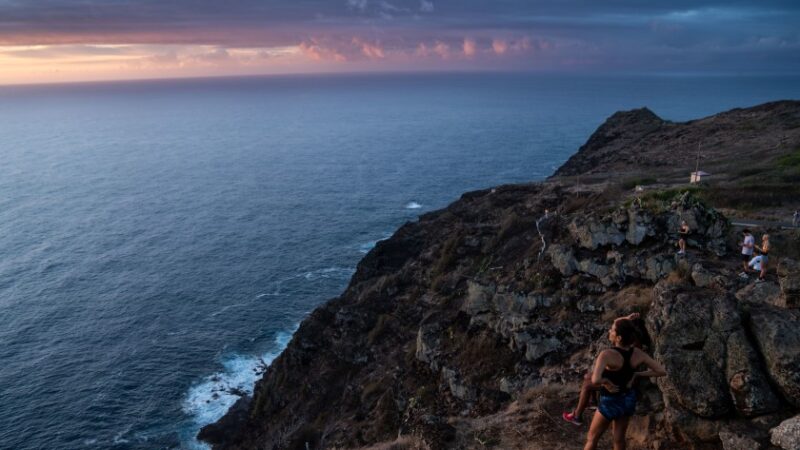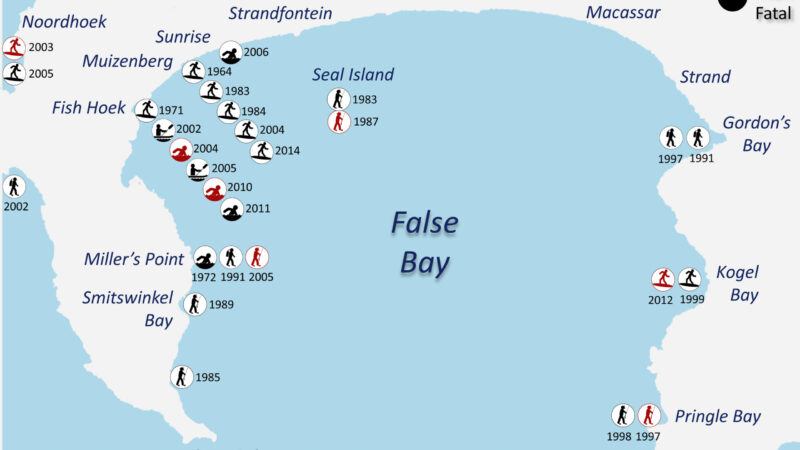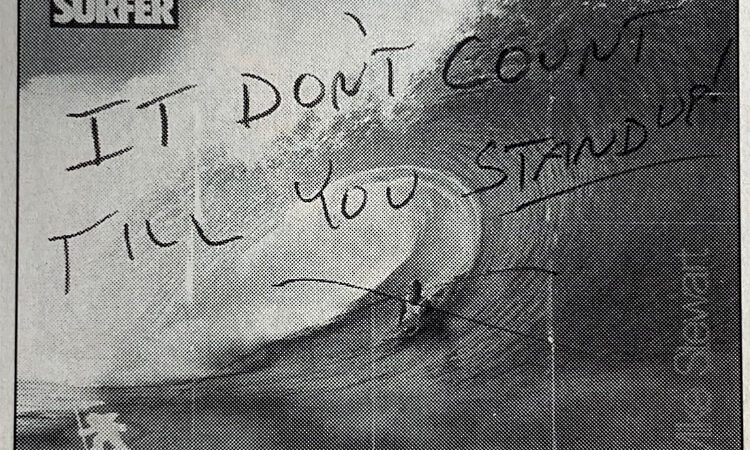COASTALWATCH | EXCLUSIVE VIDEO
Interview by Dashel Pierson
While riding waves in a prone position dates back to the ancient Hawaiians, on hand-carved boards called paipos, it wasn’t until 1973 that the sport became a worldwide phenomenon. That’s when eccentric surfer and inventor Tom Morey marketed his Morey Boogie to the world – and thus created one of waveriding’s greatest rivalries.
Bodyboarders and surfers have feuded in the lineup ever since. But as the surf world slowly creeps out of its narrow-minded ideological past – and into an accepting space of different board shapes, sizes, and materials – the relationship between bodyboarders and surfers has never been better. Hell, as soft-tops continue to sweep the surf world in popularity, even top pros have been turning to the dark side and riding prone.
And so, in celebration of our boogie brethren, this film shows an inside look into that world. Give it a watch above; we highly recommend it. And then after, check out our chat with one of the best living waveriders, regardless of board type, Mike Stewart, about bodyboarding history, progression, and why every surfer should give the boog a go.
How’d this film come about?
So, Todd Barnes, the guy who made the film, he and I had been working together for my board company [Science Bodyboards]. I knew he was a really good talent. Someone approached me to do a bigger film, one that sorta told a story. So, I thought Todd would be the guy. And we went for it.
The project kicked off in February, when the holding period for the Pipeline Invitational started. He flew over to Hawaii for the event, so he could film that and interview everyone who was there. He finished the first draft of the film about a month ago – then there were just a few tweaks and fine-tuning to be done.
It’s a great title, by the way. Is there a deeper meaning to it? Are bodyboarders portrayed as bad guys, like boogiemen?
That’s a question for Todd. But from my own experience, I think that has something to do with it. I think it’s a culture that’s not quite understood. There’s probably a dual meaning in the title. It’s a play on words, for sure, but I think it speaks to the bodyboard world – and the outside perception of it – to a deeper degree.
For people who aren’t cued into the bodyboarding world, how has the sport evolved over the years? Like from when you did a barrel roll at Pipe, which the film shows, to today?
That manoeuvre at Pipe was progressive at its time, and the sport has progressed considerably further today. Now, you’re seeing guys and girls doing bigger manoeuvres in heavier waves. That’s the clearest advancement that bodyboarding has seen – gnarlier moves, gnarlier waves.
Because the sport isn’t in the limelight so much, a lot of people probably don’t know how far it has evolved. There are these incredibly talented humans who are doing this fairly obscure thing. These guys and girls are so good, the level is so high. It’s strange to me that more people don’t know about it. That’s the thing – it’s lowkey. It’s these people doing it, these masters and incredible athletes, doing it in somewhat obscurity. It makes it pretty core and pretty cool, in a sense.
The film shows last year’s Pipe Invitational…does the bodyboard competition world differ from surfing?
This last year at the Pipe Invitational, we went to a format that was just completely open. There’re some upsides to that and some downsides – but I think the ups outweigh the down.
So, there were no set rules to how you rode the board. You could assume any posture you wanted. It also didn’t matter if you were a man or a woman. It was just completely open. Whatever you could do on a boog at Pipe, that was scored. All inclusive. As you got closer to the semis and finals, it became more like a traditional event. But guys and girls were still able to progress to the finals and not be limited to lying prone on the board.
That’s one facet of bodyboarding that’s very attractive. There are no rules. You can ride it in so many different ways. It’s very universal in that way.
Do you think surfers get inspiration from bodyboarders? What about vice versa?
If you’re a waverider, and especially at a higher level, you’re looking at everyone. Everything becomes an influence. It doesn’t matter what it is, you can see beauty in every type of waveriding.
Bodyboarding offers an intimacy with waveriding. You’re lower to the wave, the board is kinetic, you can feel the wave energy a lot more. Bodyboarding is also a lot less about appearances. You just grab and go – it’s a totally personal experience.
Another thing that bodyboarding does, is it opens up the realm of possibility in terms of what waves you can ride. Tight, steep, and in the barrel is the main domain of bodyboarding. In the past, bodyboarders were the leaders when it came to aerials. That’s still the case in super heavy and hollow surf. But on a three-foot wave, there’s no way to compete with the speed and dynamics that a surfboard offers. But in big, hollow waves – it’s too much energy for a surfboard to cope with.
For a long time, bodyboarding has always been sorta like a glimpse into the future. Look at slabby waves. Bodyboarders really pioneered that realm. A large part of bodyboarding is attempting to ride what was previously unrideable. The bodyboard is a good way to harness energy and redirect it – versus a surfboard is good for generating energy and speed. In that sense, you can control really heavy and thick waves a lot easier on a bodyboard.
Also, something that’s unique to a bodyboard, is the location on the wave that it allows for. You can do things really deep. You can roll in the barrel; you can rotate in the barrel. I think in the future, you’ll be seeing guys doing that on surfboards.
It seems like a lot more surfers are starting to pick up bodyboards. Have you noticed more surfers crossing over lately than in the past?
Absolutely. I think that’s so cool. You’re seeing guys like Jamie O’Brien and Kalani Robb embracing the boog. Then, you’ve got guys like Tom Curren – it’s been an obsession of his for years. He’s been standup boogeying for a long time. It’s a super neat era that we’re in, because people are a little less hung-up on a particular way of doing things. They’re taking the equipment out of the equation and getting to the real heart of this thing we all do – which is riding waves for the fun of it.
It’s just a pure and free-spirited way to go out and ride waves. There’re no rules – just go out and do it. I think that’s super healthy for humanity as a whole. [Laughs.] That free-spirited nature and openness and lack of ego is very contagious.
How has the rivalry between bodyboarders and surfers evolved over the years?
Today, it’s in a much better place than it used to be. I think everyone’s a little more openminded about everything. They’re losing that prejudice and bias a bit more.
It’s human nature to find a connection with things that are common. It was probably a survival instinct – where you would gravitate towards your tribe and repel others outside of your tribe. That’s really a primitive state of mind.
Early on, I think a lot of surfers felt threatened by bodyboarding. It grew really quick. I think shapers and surfers were kind of fearful of how big it got so quickly. Because it was such an easy-to-use craft, anybody could do it. It gave anybody access to the waves. And because of that, there were a bunch of people who had no clue about surf etiquette that started doing it.
I remember countless sessions at heavy waves – like even Pipe, or the Wedge, or Sandy Beach – there would be these inexperienced people who had no business of being out there. Next thing you know, they’re out there with you in the lineup. And it’s like 10-foot Pipe.
So, I think there was a couple facets that made that rivalry happen. It’s something I’ve thought about a lot, because I have been the subject of that bias. It goes back to growing up, and thinking about it, and trying to figure out why. Like, “this is something I enjoy doing. It’s not harming you or effecting you. So, why is it a negative thing?” But it’s really cool to see people starting to embrace it.
What do you hope the film shows to the surfing world about bodyboarding culture?
I hope that people can see that it’s just a fun activity. Jeff Hubbard sums it up in the film perfectly: “You just can’t take it too seriously.” Even though it’s such a big part of my life, the primary reason I’m doing it is because it’s enjoyable. That’s all. It’s just fun.
–
This interview also appeared on Surfline
Please enable JavaScript to view the comments powered by Disqus.





Recent Comments